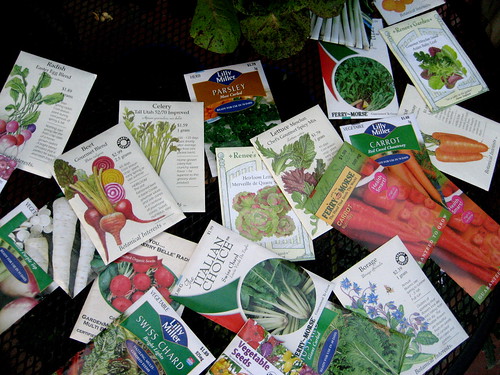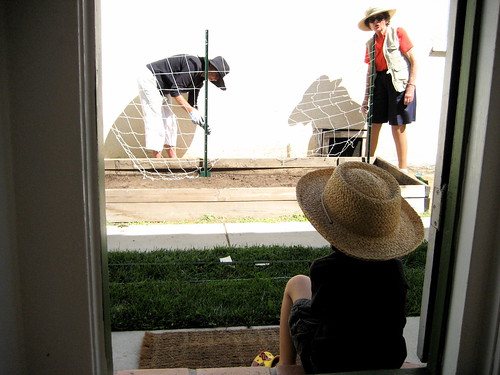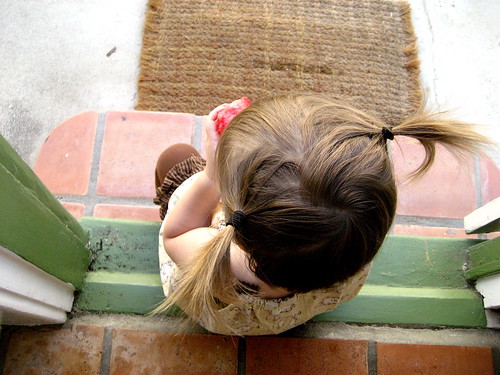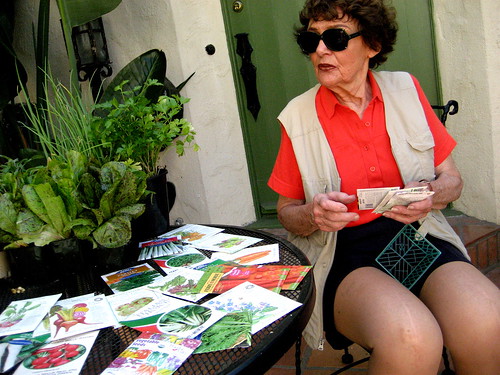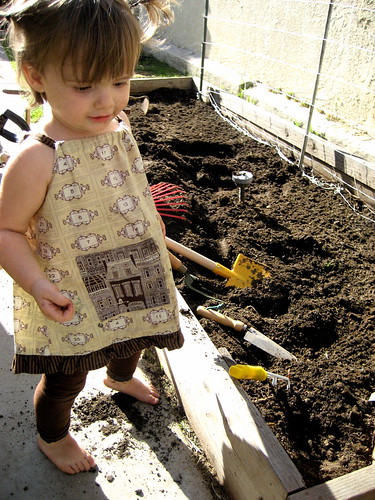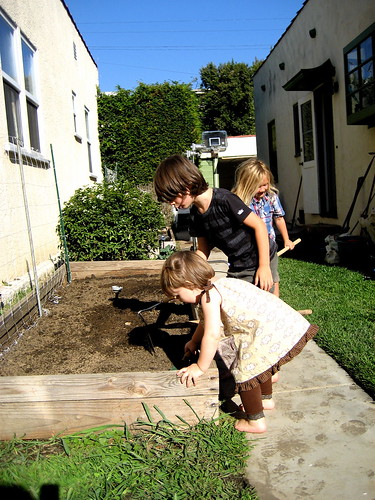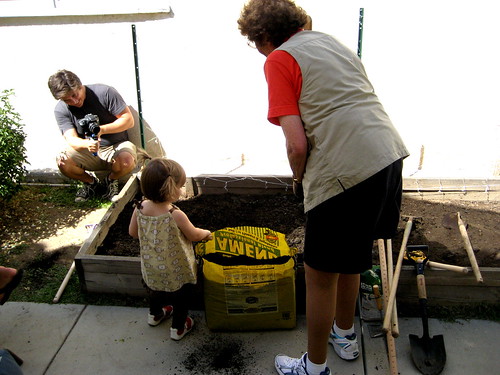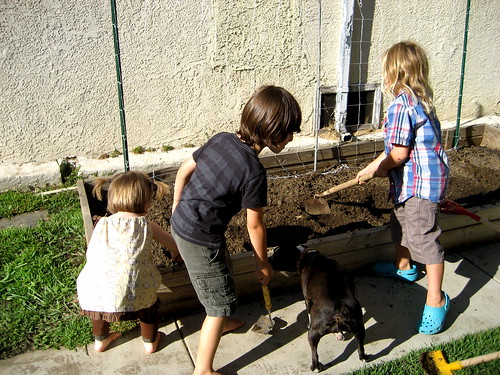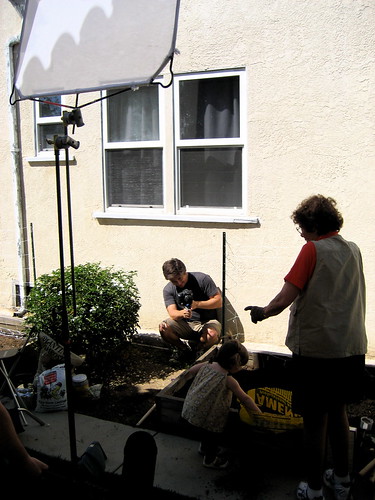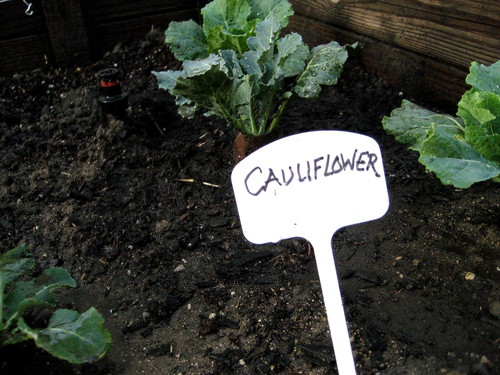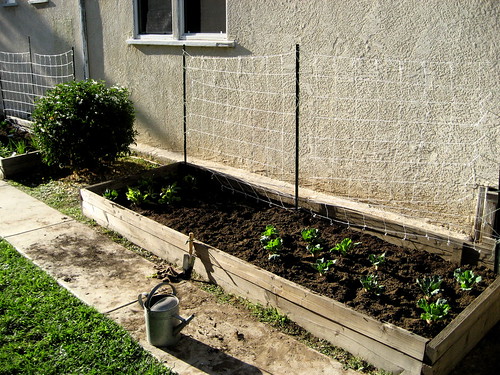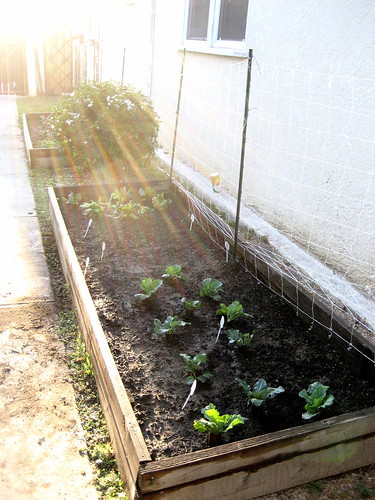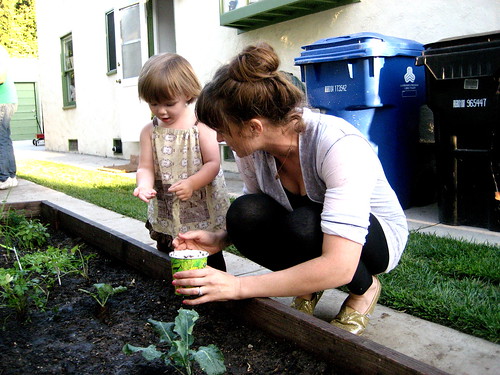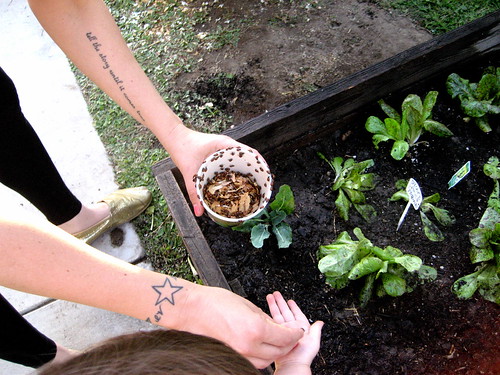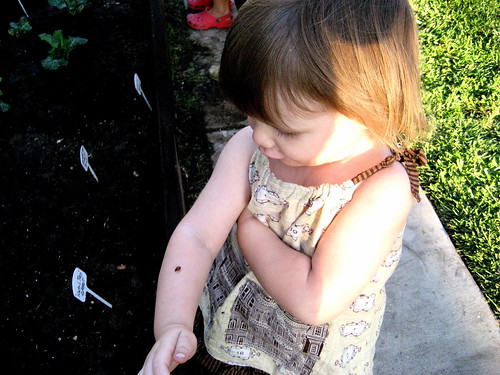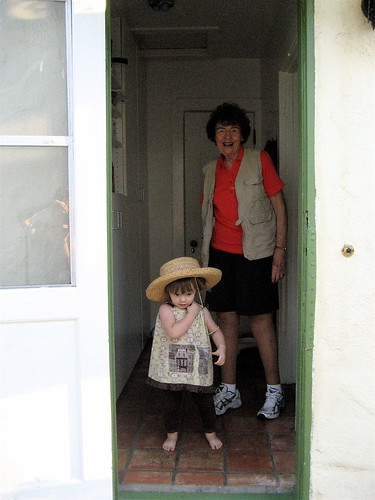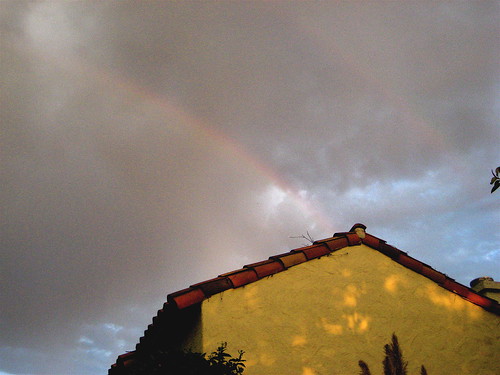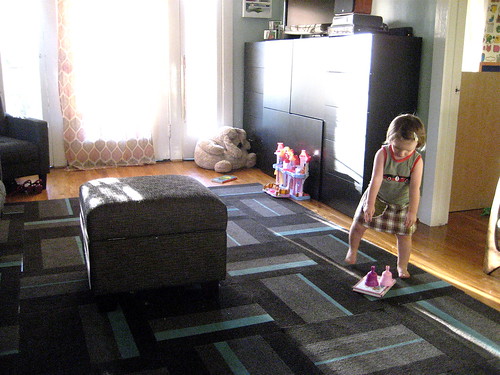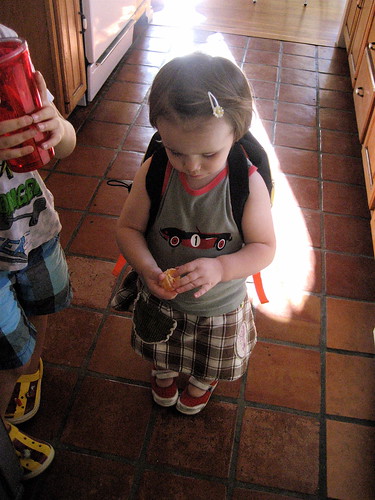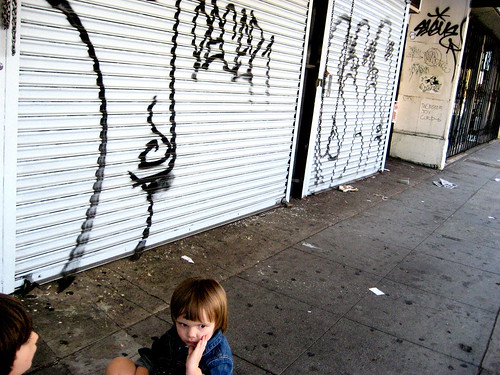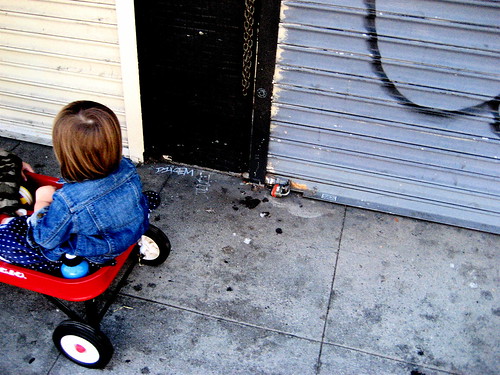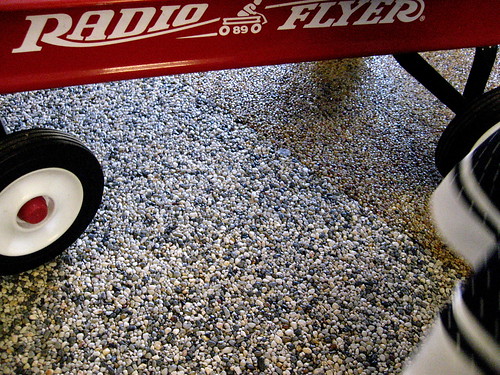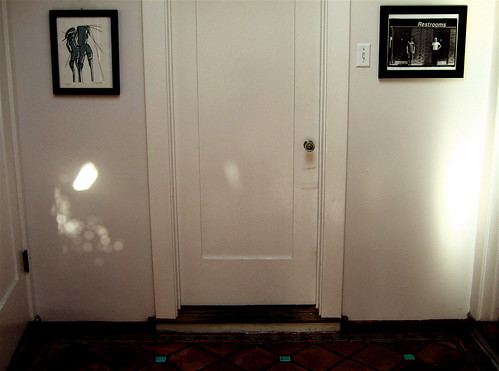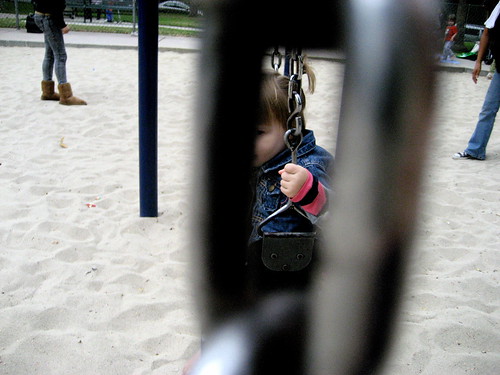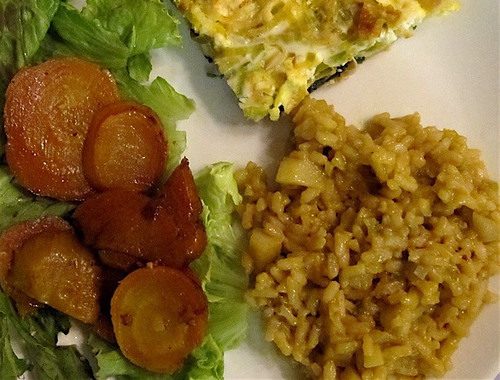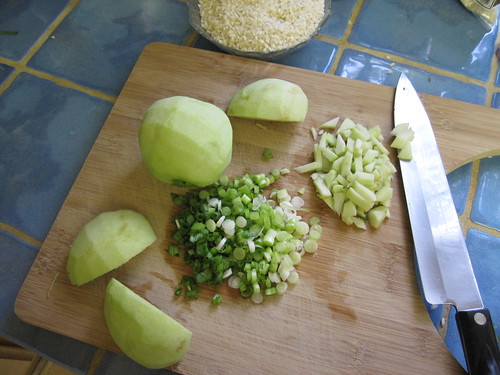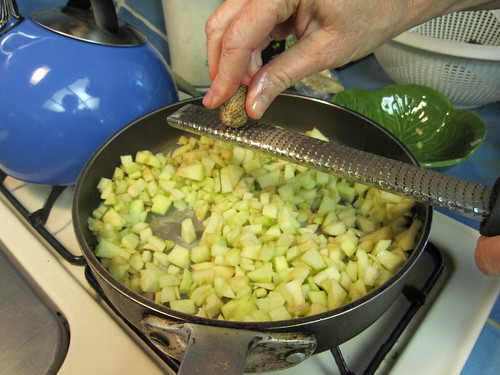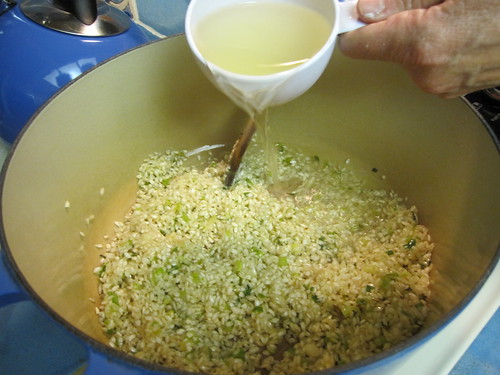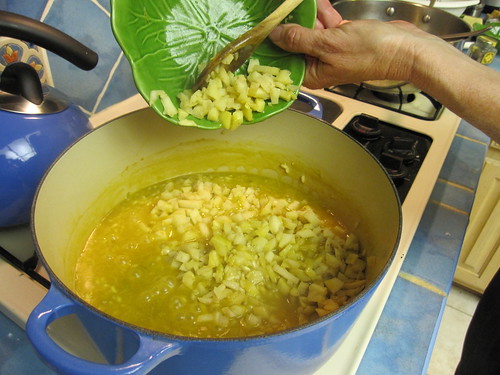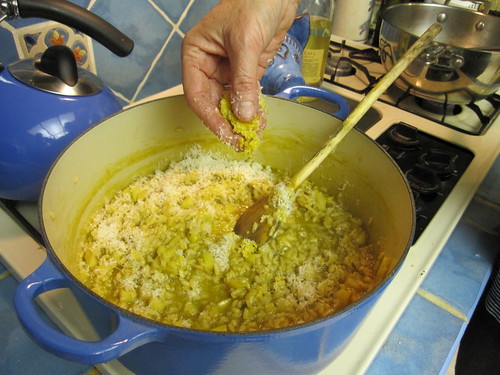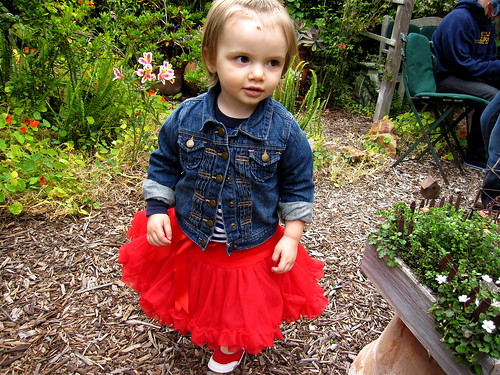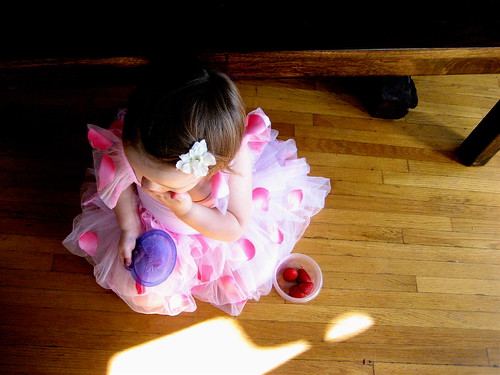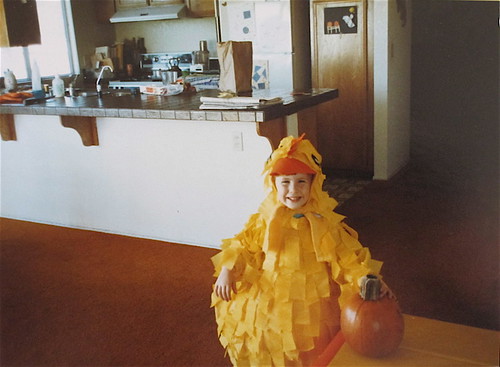The following is a guest-post by Nana who came to my house two weeks ago to help me with my vegetable garden and also to shoot some how-to gardening videos with Hal and our friend, Auggie. We had a full on production team here and my Nana at eighty-two dug in the dirt on camera for eight hours. Some of the pictures scattered throughout this post were taken during the shoot and as soon as the videos are edited together, I'll be posting them here as well. Last week my Nana generously wrote a guest post about child-friendly gardening for those of you interested in planting Fall veggie gardens with your spawn. I'll post sporadic updates as our garden grows (my fava beans, sugar-snap peas and radishes just started sprouting like crazy! It's very exciting!). In the meantime, take it away, Nana!
***
One of the best things we can do as parents, grandparents, or great-grandparents is to turn children on early to the joy of gardening. If our efforts work they’ll have a healthy outdoor hobby throughout life. If not, nothing we can do will change them. Some people adore gardening, others don’t—It’s chemistry. But maybe as parents and grandparents (and great grandparents) we can give kids the opportunity to make their own discoveries, and then stand back and not mess things up when the enthusiasm takes off.
When I was a child I was lucky to have gardens to play in. My brother John and I grew up in England and whenever it wasn’t raining we played outdoors on our tricycles. We climbed trees in the orchard, chased hoops on garden paths, or played games of imagination in the shrubbery and woods. One of my grandfathers had a vegetable garden as big as a city block. He didn’t do the work himself, a gardener called Viney did all that, but every day Grandad chatted with Viney and checked to see how things were growing. John and I watched Viney work. We liked the earthy smell of compost. John asked Viney scads of questions and Viney never was impatient. He answered our questions in a sensible and kindly way. He let us play hide and seek among the vegetable beds and pretended to chase us. Our grandfather picked ripe tomatoes in the greenhouse and handed them to us to eat. The juice ran down our faces. No tomato has ever tasted better than those.
John and I were still children—I was eight and he was eleven—when our parents left us in England and emigrated to America. Over a year later, after war had broken out in Europe, they sent for us to join them. They bought a farm in Pennsylvania and during the Second World War we all worked on the farm and in our “Victory Garden”. One winter, our stepfather Geoff told John and me he was going to give each of us a little plot of ground next to his vegetable garden the following spring. We could plant whatever we wanted. After that John and I spent many winter days poring over seed catalogues while snow covered the ground outdoors. Catalogues were black and white but their written descriptions filled our heads with dreams of stunning gardens overflowing with our favorite flowers and vegetables. In spring we sent for seeds, dug up the soil, and planted. No one told us what to plant, what to do, or how to do it. We forgot to amend the soil, fertilize, or water. The family vegetable garden was spectacular, but John’s and my plants died.
Our gardens were a failure, but it didn’t matter. Our parents never noticed. No one criticized us so our dream survived. John and I finally lost patience with our own little garden plots. Even then, no one minded or criticized us. From then on we concentrated on helping in the family garden, but we were turned onto gardening for life. The dreams we had enjoyed during that snowy winter stayed with us forever. Instead of the reality, we remembered the dream. Now in our eighties we are both still gardening today.
Our gardens were a failure, but it didn’t matter. Our parents never noticed. No one criticized us so our dream survived. John and I finally lost patience with our own little garden plots. Even then, no one minded or criticized us. From then on we concentrated on helping in the family garden, but we were turned onto gardening for life. The dreams we had enjoyed during that snowy winter stayed with us forever. Instead of the reality, we remembered the dream. Now in our eighties we are both still gardening today.
If you’re planning on growing vegetables in your own home garden and would like to involve your kids in the process, here’s an easy recipe for success:
Kid Friendly Organic Gardening
SUPPLIES:
1 patch earth or raised bed in full sun. (6 hours or more of sun a day is best.)
1 set child-friendly tools. (Optional. These can be tools bought at a garage sale with handles sawed down to child size, but just a trowel will do.)
Adult tools: (Spade, hoe, rake, cultivator, trowels.)
Gloves for you and kids. (optional.)
1 bag organic soil amendment or home made compost per raised bed filled with garden soil.
1 small paint-bucket of full of potting soil for covering seeds.
1 small paint-bucket containing a cup or two of sand for mixing with small seeds.
1 small paint bucket to hold seed packets, scissors, plant labels, pen, and paper clips or clothes pins for closing up seed packets.
Several Plant labels and pen.
1 bag organic fertilizer. (This can be commercial packaged organic veggie food, chicken manure, or guano.)
Seeds and plants of vegetables you want to grow. (Choose cool-season plants when you start your garden in winter or spring. Choose warm-season plants when you start your garden in spring or early summer.)
Packaged or homemade trellis for tall crops like peas.
Posts to hold up trellis
A water system or the garden hose. (Drip systems make for easy care once installed. Water from the hose is fine too.)
SEASONING:
2 pounds Easy-Does-It: (If a child runs away to play, let them go. Don’t fuss.)
1 bucket Fun: (Gardening is work but it’s also fun and satisfying. Children will catch on if they see you having fun.)
1 plan of action. (Think out what you’re going to do and write a list step-by-step.)
HERE ARE THE STEPS:
• Collect ingredients.
• Dig the ground to the depth of a spade and turn over the soil.
• Spread a layer of about 4 inches of organic soil amendment or homemade compost on top of soil. Mix it into the top 8 to 12 inches of soil.
• Apply the right amount of fertilizer according to package directions and cultivate it into the top 6 inches.
• Rake the top of the ground level.
• Plan to plant tall crops to the north and shorter crops to the south. Or plant tall crops in north-south rows so sun passes over them and hits all parts.
• For tall crops install trellises using fence posts for supports.
• Plant seeds and transplants of crops correct for the season of the year.
• Read seed packets and labels for correct distances apart.
• Water the garden after planting.
• Continue on: Water your garden, weed when necessary, release ladybugs, pick off bad bugs, and watch your garden grow.
Thin crops that need it as they grow. Feed when required and harvest when crops are ready. Apply “Garden Know How” as needed in an ongoing way whenever necessary.
GARDEN KNOW-HOW
(EASY FACTS FOR YOU AND THE KIDS TO LEARN BY DOING.)
Here are some of the things vegetables need:
• A plot of ground in full sun.
• Organic soil amendment to loosen up the soil and create microbial action.
• Fertilizer to feed them.
• Water for them to drink.
• Protection from pests and diseases.
• Correct planting time for each crop.
Here are the times of year to plant various crops:
• In warm-winter climates: Plant cool-season crops in fall and winter.
• In cold-winter climates: Plant cool-season crops in early spring.
• In all climates: Plant warm-season crops after the weather warms up in spring when all danger of frost has passed.)
Here are some little things to pay attention to:
1. Correct planting depth.
• Each seed has a correct planting depth.
• Follow package directions and you will do okay.
2. Covering seeds with potting soil can help them sprout in heavy soil.
3. Mixing fine seeds with a little sand can help spread them out evenly.
4. Loosening up the roots of transplants can help them get off to a good start.
5. Humic acid is a great transplanting fluid and root stimulant. Find it in catalogues.
6. Follow the organic way:
• Feed plants with organic fertilizers; they’ll taste better.
• Use organic methods to control pests and diseases.
• Never use pesticides or synthetic fertilizers.
• Make a compost pile or buy a couple of composting bins and follow the directions that come with the bin. (While you are filling one, you can be using the compost out of the other.)
• Encourage earthworms by digging lots of organics into the ground or start a worm bin.
SUMMING UP:
With very young children give them little jobs like digging or raking that could be fun, and if they wander off, just let it happen. If a child is forced to garden, it’s simply another chore. Some children love gardening while others do not.
releasing ladybugs with the kids after the garden has been planted
My great grandson Archer is a boy with wheels and construction toys in his head, but Fable seems to take to gardening like a ladybug to an aphid. If kids see grownups gardening correctly they’ll learn by osmosis. And by knowing the basic facts ourselves we’ll be ready with answers if a kid should ask. And if we don’t know the answer to a question, we can always look it up and tell them later.That’s enough for a start! Good luck and have fun gardening, either with your kids or without. Stay tuned for some videos on “Child-Friendly Gardening” and “Cool-Season Crops” to get you started on the road to success.
Rebecca’s Nana, AKA Pat Welsh
GGC

